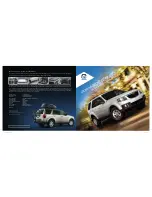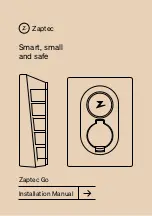
CAUTION!
•
Always check the depth of the standing water before driving
through it. Never drive through standing water that is deeper
than the bottom of the tire rims mounted on the vehicle.
•
Determine the condition of the road or the path that is under
water and if there are any obstacles in the way before driving
through the standing water.
•
Do not exceed 5 mph (8 km/h) when driving through
standing water. This will minimize wave effects.
•
Driving through standing water may cause damage to your
vehicle’s drivetrain components. Always inspect your vehi-
cle’s fluids (i.e., engine oil, transmission, axle, etc.) for signs
of contamination (i.e., fluid that is milky or foamy in
appearance) after driving through standing water. Do not
continue to operate the vehicle if any fluid appears contami-
nated, as this may result in further damage. Such damage is
not covered by the new vehicle limited warranty.
•
Getting water inside your vehicle’s engine can cause it to
lockup and stall out and cause serious internal damage to the
engine. Such damage is not covered by the new vehicle
limited warranty.
WARNING!
•
Driving through standing water limits your vehi-
cle’s traction capabilities. Do not exceed 5 mph (8
km/h) when driving through standing water.
•
Driving through standing water limits your vehi-
cle’s braking capabilities, which increases stop-
ping distances. Therefore, after driving through
standing water, drive slowly and lightly press on
the brake pedal several times to dry the brakes.
•
Getting water inside your vehicle’s engine can
cause it to lockup and stall out and leave you
stranded.
•
Failure to follow these warnings may result in
injuries that are serious or fatal to you, your
passengers, and others around you.
STARTING AND OPERATING
273
5
Summary of Contents for Sebring Convertible
Page 2: ......
Page 5: ...INTRODUCTION 5 1 ...
Page 8: ......
Page 120: ...120 UNDERSTANDING THE FEATURES OF YOUR VEHICLE ...
Page 121: ...UNDERSTANDING THE FEATURES OF YOUR VEHICLE 121 3 ...
Page 122: ...122 UNDERSTANDING THE FEATURES OF YOUR VEHICLE ...
Page 174: ...BASE INSTRUMENT CLUSTER 174 UNDERSTANDING YOUR INSTRUMENT PANEL ...
Page 175: ...PREMIUM INSTRUMENT CLUSTER UNDERSTANDING YOUR INSTRUMENT PANEL 175 4 ...
Page 240: ...240 UNDERSTANDING YOUR INSTRUMENT PANEL ...
Page 287: ...STARTING AND OPERATING 287 5 ...
Page 334: ......
Page 341: ...Jacking Locations WHAT TO DO IN EMERGENCIES 341 6 ...
Page 354: ...2 4L ENGINE COMPARTMENT 354 MAINTAINING YOUR VEHICLE ...
Page 355: ...2 7L ENGINE COMPARTMENT MAINTAINING YOUR VEHICLE 355 7 ...
Page 356: ...3 5L ENGINE COMPARTMENT 356 MAINTAINING YOUR VEHICLE ...
Page 420: ......
Page 431: ...INDEX 10 ...
















































